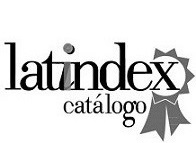La masacre hecha figura: un acercamiento a los usos y apropiaciones de las Siluetas de Margarita Belén
DOI:
https://doi.org/10.30972/dpd.13217497Palabras clave:
siluetas, memoria, posdictadura chaqueñaResumen
El artículo analiza los usos y apropiaciones de las Siluetas de Margarita Belén, imágenes pintadas por primera vez en 1984 por el artista, escritor y ex detenido político, Miguel Ángel Molfino, orientadas a inscribir la memoria de las víctimas y de la masacre de Margarita Belén en el espacio público de Resistencia, Chaco. Este acontecimiento visual adquirió una gran potencialidad para la activación y reelaboración del recuerdo de la represión durante la última dictadura cívico-militar, por lo que las Siluetas de Margarita Belén fueron -y son- estrategias de representación que, fragmentaria y heterogéneamente, inscribieron la memoria de la masacre y sus víctimas.
En este sentido, se reflexiona acerca de la rápida incorporación de estas imágenes en la militancia de los derechos humanos, lo que las llevó a ser plasmadas en registros visuales de distintos formatos: muros, revistas, afiches, invitaciones a conmemoraciones y hasta resultar ser objeto de políticas de memoria. Para esto, buscamos, por un lado, reconstruir algunas instancias de producción, apropiación y reproducción de estas imágenes a través de distintos soportes y contextos desde 1984 y, por otro, indagar los modos en que estas formas visuales abrieron el presente y cada época para permitir la irrupción del pasado traumático.
Publicado
Cómo citar
Número
Sección
Licencia

Esta obra está bajo una licencia internacional Creative Commons Atribución-NoComercial 4.0.
La Revista De Prácticas y Discursos. Cuadernos de Ciencias Sociales solicita sin excepción a los autores una declaración de originalidad de sus trabajos, esperando de este modo su adhesión a normas básicas de ética del trabajo intelectual.

Este obra está bajo una licencia de Creative Commons Reconocimiento-NoComercial 2.5 Argentina.






52.jpg)


.png)




